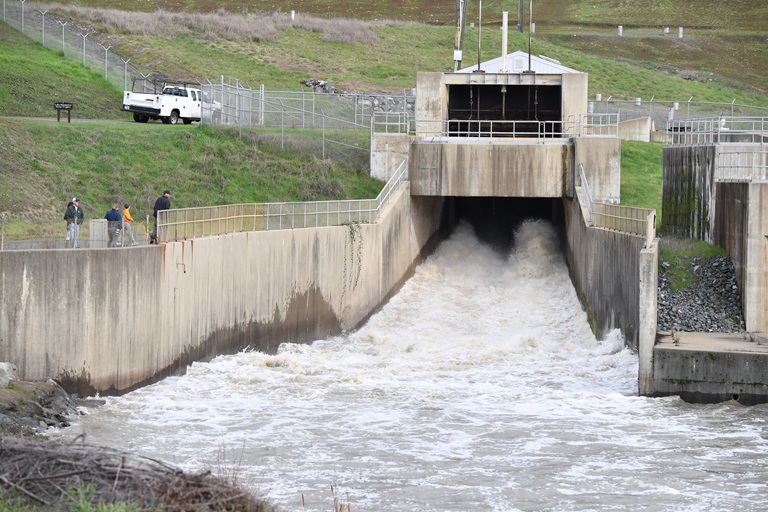California’s Forecast-Informed Reservoir Operations Are Key to Managing Floods and Water Supplies
High-flow releases from Coyote Valley Dam at Lake Mendocino on January 16, 2023.
As California experiences more extreme swings between wet and dry periods, it is critical for the State to deploy innovative forecasting and water management strategies to adapt to our changing climate.
The Department of Water Resources along with federal and local water agencies, have developed a Forecast-Informed Reservoir Operations (FIRO) program to take advantage of scientific improvements in forecasting atmospheric rivers to better anticipate and manage large storm events while maximizing opportunities to increase water supply. Atmospheric rivers like those we’ve seen in January 2023 have a profound impact on water management in California.
DWR, in coordination with Yuba Water Agency, UC San Diego, Scripps Institution of Oceanography, Center for Western Weather and Water Extremes, and the U.S. Army Corps of Engineers are now working together on this critical public safety initiative at two locations: Lake Oroville and New Bullards Bar.
Implementing FIRO at these two reservoirs impacting the Yuba and Feather rivers allows for coordinated, early releases of water in advance of strong atmospheric rivers, creating additional reservoir capacity to manage incoming inflows. Additionally, there is potential to improve water supply reliability and increase hydropower generation, both valuable assets.
FIRO is also being developed along the Santa Ana River Watershed in Orange County in an effort to improve groundwater recharge with stormwater storage at Prado Reservoir. FIRO originated at Lake Mendocino on the Russian River in an innovative pilot project with Sonoma Water, the U.S. Army Corps of Engineers, and Scripps Institution of Oceanography’s Center for Western Weather and Water Extremes. The use of a steering committee of key agency and science partners enabled a collaborative approach to developing strategies to maximize the benefit of a flexible storage and release schedule while improving flood mitigation benefits.
On January 16, 2023, Sonoma Water and the U.S. Army Corps of Engineers marked the first high-flow release from Coyote Valley Dam since the drought started in 2020. Lake Mendocino was a bone dry lake when it was the the backdrop for Governor Newsom’s regional drought emergency declaration in April 2021. FIRO has allowed operators to maximize water supply during our recent winter storms while also managing flood control and the reservoir is now nearly full.
These pilot projects have demonstrated significant value for the U.S. Army Corps of Engineers to develop a program to evaluate using FIRO in all new water control manual updates. This opens the door for California to explore implementing FIRO broadly as an adaptation strategy to climate change.
At the heart of the FIRO program is the strong commitment to partnership and reservoir operation coordination among public agencies. Each partner agency plays a critical role in the program. This superior level of coordination nurtures knowledge-sharing and improvements in tools and technologies.
It is one of just many tools California and its federal and local agency partners are using to reduce the risk of flooding and improve water supply in wet years as we adapt to a hotter, drier future in California.
